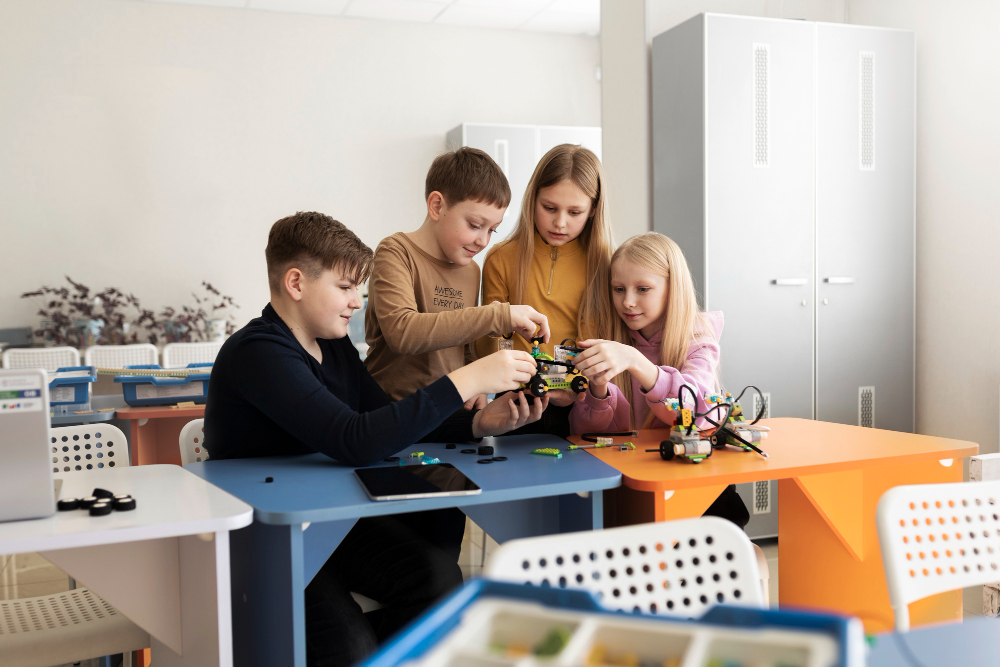Serendipity the phenomenon of finding valuable or agreeable things not sought for—often feels like pure chance. A happy accident. A stroke of luck. But what if we could design learning environments, not to force serendipity, but to significantly increase the likelihood of these fortunate discoveries? This is the intriguing concept behind “Engineering Serendipity” in education: creating structured frameworks and flexible spaces where unexpected connections, unforeseen insights, and new passions are not just possible, but probable.
For too long, education has often been a linear path, a conveyor belt of prescribed content and expected outcomes. While this ensures a foundational body of knowledge, it can inadvertently stifle the very kind of spontaneous, self-directed discovery that often leads to deep understanding and personal passion. How do we move beyond a purely didactic model, even in highly structured environments like private schools Melbourne, to cultivate a more dynamic, discovery-rich experience?
The Paradox of Intentional Unpredictability
“Engineering Serendipity” sounds like a paradox. How can you plan for the unplanned? The key lies in understanding that serendipity isn’t about forcing an outcome, but about maximizing the conditions under which beneficial accidents are likely to occur. It’s about designing a system that encourages exploration, interaction, and the unexpected collision of ideas.
Think of a bustling marketplace. No one plans every conversation or every item a shopper will encounter. Yet, the design of the marketplace—its open layout, diverse vendors, and constant flow of people—makes serendipitous discoveries (a new flavor, an old friend, an unexpected bargain) highly probable. Our classrooms can be similar intellectual marketplaces.
The Blueprints for Serendipitous Learning
To engineer serendipity, educators and school designers can focus on several key principles:
- Curated Randomness: Instead of a purely linear curriculum, introduce elements of “curated randomness.” This might involve:
- Themed “Discovery Days”: Once a month, dedicate a day to an overarching theme (e.g., “Flight,” “Cycles,” “Measurement”) but allow students significant freedom to explore aspects of that theme through different lenses—historical, scientific, artistic, literary—with resources provided but no single prescribed outcome.
- “What If” Prompts: Offer open-ended prompts or unusual artifacts at the start of a lesson that encourage diverse interpretations and unexpected tangents before circling back to the core content.
- “Intellectual Provocations”: Place intriguing, seemingly unrelated objects or texts around the classroom to spark conversations and connections that are not immediately obvious.
- Flexible Learning Spaces: The physical environment plays a crucial role.
- Modular Furniture: Desks and chairs that can be easily rearranged to facilitate individual work, small group collaboration, or larger discussions.
- Designated “Discovery Zones”: Areas stocked with diverse materials—books on varied subjects, art supplies, building blocks, scientific tools, digital creation devices—that invite open-ended exploration. These are not tied to a specific lesson but are always available for students to gravitate towards.
- Visual Richness: Walls that display not just finished work, but also “works in progress,” intriguing questions, and cross-disciplinary connections.
- Interdisciplinary Collisions: While “The Symphonic Mind” is about intentional composition, engineering serendipity fosters accidental collisions.
- Cross-Pollination Projects: Assign projects that inherently demand drawing from multiple disciplines, even if the primary focus is one subject. A history project on ancient civilizations could require students to build a scale model (engineering), calculate resource needs (math), or depict daily life through art (visual arts). The “aha!” moments often come from wrestling with these intersections.
- Guest Speakers: Invite individuals from vastly different fields to share their work. A scientist discussing algorithms might inadvertently spark a literary student’s idea for a narrative about artificial intelligence.
- Embracing Open-Ended Inquiry: Rather than always providing direct answers, teachers can cultivate a culture of open questions.
- “Wonder Walls”: A space where students can post questions that arise during lessons, even if they aren’t directly related to the current topic. These questions can then become starting points for future independent inquiry or class discussions.
- “Choose Your Own Adventure” Projects: Give students significant autonomy in defining their project’s scope, methodology, and output within broad parameters. This increases the chance they will stumble upon an area of genuine, unexpected passion.
- Cultivating a Culture of Sharing and Reflection: Serendipitous discoveries are amplified when shared.
- “Show and Tell” for Big Ideas: Regular opportunities for students to share something new they’ve discovered, a connection they’ve made, or a question that has emerged from their independent explorations.
- Metacognitive Reflection: Guiding students to reflect not just on what they learned, but how they learned it. “What unexpected turns did your thinking take?” “Did you stumble upon anything interesting you weren’t looking for?” This helps them recognize and value serendipitous moments.
The Outcomes of Fortunate Discoveries
When serendipity is engineered, the learning landscape transforms:
- Deepened Intrinsic Motivation: Discovering something valuable on your own is incredibly empowering and fuels a lasting desire to learn more.
- Enhanced Creativity and Innovation: Unforeseen connections are the bedrock of novel ideas. Students become adept at linking disparate concepts in new and productive ways.
- Greater Resilience and Adaptability: Navigating an environment with elements of unpredictability builds the confidence to explore unknowns and adapt to new information.
- Personalized Learning Pathways: Serendipitous moments often reveal latent interests and talents, guiding students toward areas they might never have intentionally explored.
- A Richer, More Vibrant Classroom Culture: The classroom becomes a dynamic hub of discovery, curiosity, and shared excitement, rather than a passive reception hall for information.
The magic of serendipity isn’t about avoiding hard work or structured learning; it’s about amplifying its impact. It recognizes that while foundational knowledge is essential, true wisdom often blossoms in the unexpected moments of insight that arise when rigorous inquiry meets open-ended exploration.
By designing our classrooms and curricula with intentional unpredictability, we don’t just teach students facts; we teach them how to discover, how to connect, and how to harness the joyous power of fortunate intellectual accidents, preparing them for a world where the most valuable discoveries often come from looking just a little bit off the beaten path.
For more, visit Pure Magazine


